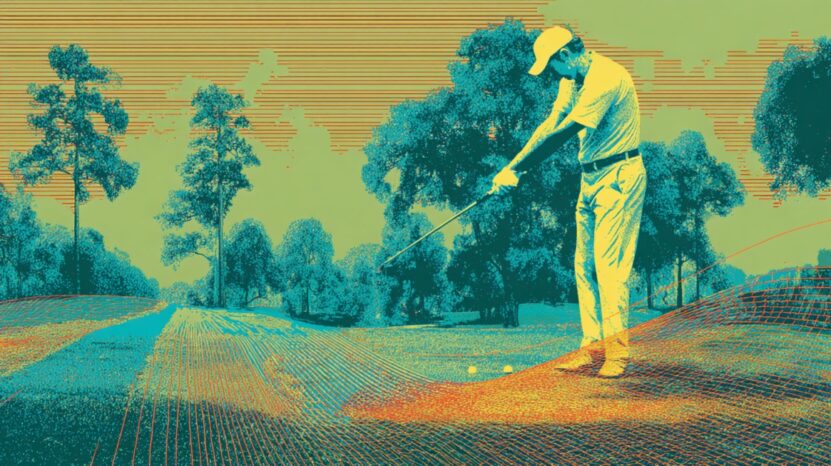Golf can be both a competitive and relaxing game, but scoring fairly when players have different skill levels requires structure. That’s where a handicap comes in.
Golf handicaps create a level playing field by adjusting scores, making it possible for beginners and experts to compete with each other.
They’re widely used by casual players, leagues, and formal tournaments to balance competition and promote fairness.
Without further ado, let us begin.
Why Golf Handicaps Matter
Handicaps provide balance, allowing a wide range of players to compete without anyone feeling like they’re out of their league.
A higher-handicap player can face off against someone much more experienced and still have a shot at winning.
That balance fosters stronger competition and keeps the game engaging for everyone. Without them, only low-handicap or scratch players would dominate, discouraging participation by mid- or high-handicap golfers.
Equalizing the field leads to more exciting matchups and higher turnout at events. Casual leagues, corporate outings, and amateur tournaments all rely heavily on handicap systems to maintain fairness.
Personal progress also becomes easier to track through handicaps. Watching scores improve is one thing, but seeing a handicap drop serves as real proof of improvement.
A player who once needed 25 strokes over par might eventually cut that number in half, which builds confidence and keeps motivation high.
@grant_horvatProgress takes time 🙂♬ The Night We Met – Lord Huron
- Inclusivity: Players of different abilities can compete without one side having an unfair advantage.
- Fair competition: Skill differences are balanced, keeping matches close and engaging.
- Motivation: Seeing measurable improvement over time keeps players practicing and playing.
- Structured divisions: Clubs can group golfers by handicap, making leagues more competitive and enjoyable.
- Community strength: More golfers feel welcome, boosting participation and creating lasting connections.
What Does a Good One Look Like?
No single number defines a good golfer. Goals differ. Someone new to the game may find success just by keeping the ball in play, while others might want to reach elite levels of competition.
What’s considered “good” changes depending on context, effort, and consistency.
For those still learning the basics, high numbers are nothing to be ashamed of. Everyone starts somewhere.
Mid-level players often have enough consistency to be competitive, though there’s always room to improve.
Lower handicaps show refined skills and strong control, often developed through lessons, practice, and experience.
| Level | Handicap Range | Description |
|---|---|---|
| Beginner | 28 or higher | Still learning the rules, swing mechanics, and pace of play. Improvement often comes quickly. |
| Intermediate | 10 to 20 | Can play consistent rounds, though putting or long irons may still need refinement. |
| Advanced | Below 10 | Shows strong control, shot-shaping, and course management. Competes regularly and does well. |
| Scratch/Professional | 0 or negative | Shoots near par or better on most courses. Relies on consistency, strategy, and mental focus. |
Key Handicap Concepts Explained
Golf handicaps rely on several core concepts that work together to ensure fairness in competition.
For new and experienced players alike, getting a handle on these ideas is essential for keeping games competitive and transparent.
- Golf Handicap vs. Handicap Index
- Course Handicap
- Stroke Index
Golf Handicap vs. Handicap Index

Golf Handicap and Handicap Index often get confused, but they serve different purposes.
- Golf Handicap reflects how many strokes a player needs to play to par.
- Handicap Index is a standardized metric created using a specific formula.
- Portability makes the Handicap Index functional no matter where someone plays.
Golfers can carry the same index between courses, and their scoring ability is always represented fairly. That system is what brings structure to casual rounds and competitive events alike.
Course Handicap
Course Handicap translates a player’s Handicap Index into strokes allowed at a specific course.
Not every course plays the same. Some are more difficult, some more forgiving. This calculation bridges that gap. The formula looks like this:
Course Handicap = Handicap Index × (Slope Rating ÷ 113)
- Slope Rating evaluates course difficulty for bogey golfers, not scratch golfers.
- Higher slope means more strokes. A more difficult course allows higher handicaps to adjust accordingly.
- Fairness across locations keeps the game consistent when golfers travel or try new courses.
Course Handicap personalizes scoring by aligning a player’s ability with the specific challenge of the course.

Stroke Index
Stroke Index adds another layer by identifying where strokes are given during a round. Holes are ranked from 1 to 18, with 1 being the toughest and 18 being the easiest.
- One stroke per hole is given in descending order of difficulty, based on a player’s Course Handicap.
- A player with a Course Handicap of 12 will receive one extra stroke on the 12 most difficult holes.
- Strategy changes when extra strokes are available, where they matter most, on the holes most likely to impact scoring.
Stroke Index protects competitive balance hole by hole. Instead of giving a blanket advantage, it pinpoints specific challenges and adjusts them proportionally.
How is it Golf Handicap Calculated?
Golfers often ask how a handicap reflects skill, and the answer lies in a step-by-step formula designed to ensure fairness across different courses and playing conditions.
Introduced in 2020, the World Handicap System (WHS) brought unity to what used to be a patchwork of national systems.
Accuracy, fairness, and portability are the cornerstones of this system. Below is a breakdown of how the calculation works, explained through key components and bullet points for clarity.
Step #1: Calculate Handicap Differentials
The first step in computing a handicap involves generating handicap differentials after each round of golf. A differential adjusts for course difficulty, turning raw scores into more useful data.
Formula: Handicap Differential = (Adjusted Gross Score – Course Rating) × 113 / Slope Rating
- Adjusted Gross Score reflects a player’s score after applying any necessary equitable stroke control (ESC) adjustments
- Course Rating measures expected score for a scratch golfer
- Slope Rating measures course difficulty for a bogey golfer compared to a scratch golfer
- 113 is the standard slope rating used to normalize difficulty
Each round results in one differential. Collecting multiple differentials increases accuracy.
Step #2: Choose the Lowest 8 Differentials Out of the Last 20 Rounds
More rounds mean more data, and WHS capitalizes on this by averaging only the best scores.
- Out of the last 20 rounds played, only the 8 lowest differentials are selected
- High-scoring outliers are excluded to better represent potential performance
- Reduces impact of bad rounds due to weather, illness, or other variables
This approach rewards consistency without overly penalizing occasional poor play.
Step #3: Average the Chosen Differentials and Multiply by 0.96
Final step involves creating the actual Handicap Index using an adjusted average of the 8 chosen scores.
- Add the 8 lowest differentials
- Divide the total by 8
- Multiply the result by 0.96
The 0.96 factor applies a small adjustment referred to as a “bonus for excellence” which slightly lowers the handicap to reward consistently strong play.
- Play and record at least 20 rounds
- Calculate Handicap Differentials for each
- Identify the 8 lowest differentials
- Average those 8 scores
- Apply the 0.96 bonus factor
How to Improve Your Golf Handicap
Lowering a golf handicap doesn’t happen overnight, but small, focused efforts can lead to real gains. Success lies in discipline, adaptability, and smart strategy.
- Consistent practice routines
- Selecting proper equipment
- Investing in coaching
- Analyzing performance data
- Expanding experience on various courses
Improvement starts with consistent practice, especially in the short game. Putting and chipping influence the total score more than most realize.
Countless strokes are lost within 50 yards of the green. Practice sessions should have a structure.
Use putting gates, distance drills, and simulated pressure situations to mimic real rounds.
@danecvetkovic Three ways I took my handicap from 2 to +5 📈 #golf #progolf #golftips #golfer #golfswing #golfing #golfcourse #golfinstruction ♬ sdp interlude Slowed – VTX
Equipment plays a significant role.
- Swing speed
- Posture
- Strengths
Forgiving drivers and cavity-back irons can correct mishits. Getting clubs custom-fitted is a smart move. One poorly chosen club can wreck both confidence and score.
Professional guidance adds value. Golfers who take lessons, even infrequently, gain fresh insight into flaws they may not even notice. Coaches offer feedback, drill suggestions, and course management strategies that produce faster progress.
Apps like Arccos, Hole19, or even manual scorecards offer easy ways to collect and review stats. With patterns revealed, players can focus on targeted improvement instead of guessing.
Exposure to different courses creates smarter golfers. Each course presents distinct challenges: bunker placements, green speeds, rough density, and wind exposure.
Playing a variety of layouts builds adaptability and sharpens shot selection. Learning to recover, read greens, and manage risks under new conditions prepares players for all kinds of pressure.
Final Thoughts
Handicaps aren’t random numbers. They’re a tool for equality, a personal scorecard for progress, and a gateway to competition.
- Skill
- Effort
- Improvement
Knowing how it works adds depth to the game and creates a stronger connection with others on the course.

